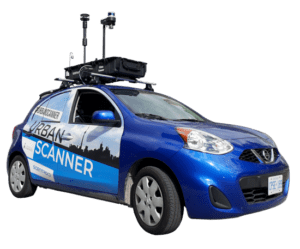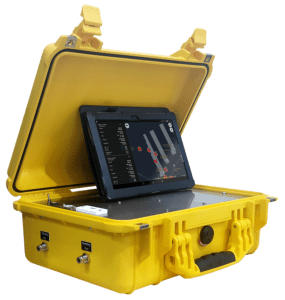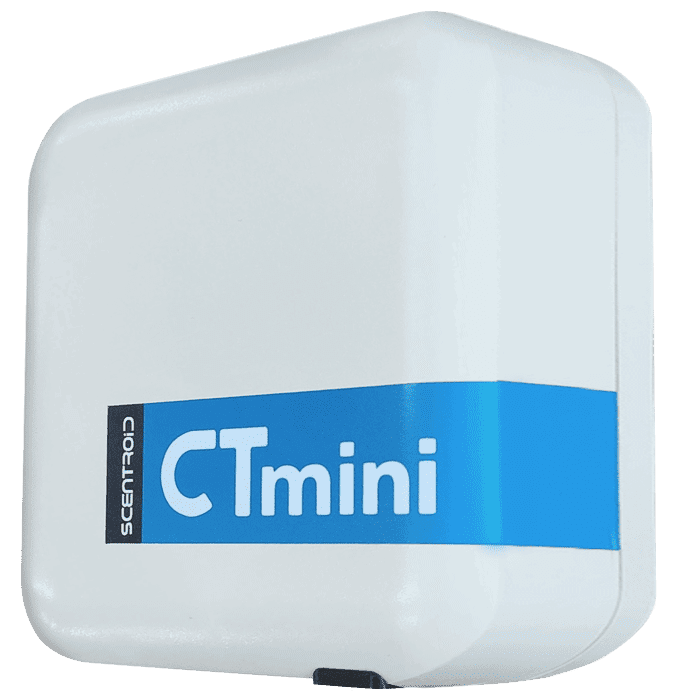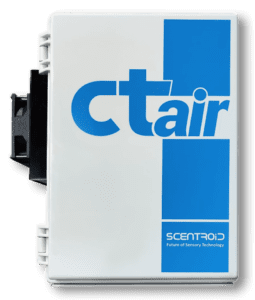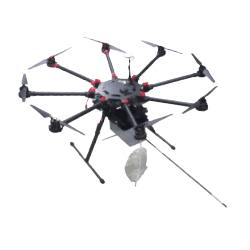
Scentroid's Approach for
Conducting City Air Pollution Research and Air Monitoring
Within an urban landscape, millions of people live, breathe and grow. Control of particulate matter, noxious gases, noise and overall pollution has become a primary concern as more and more studies are released on the detrimental effects of poor air quality in relation to our health.
The combination of mobile monitoring device, and stationary equipment monitoring provides a comprehensive approach to urban air quality monitoring.
Mobile Monitoring Device can detect hot-spots and a large area in an effectively way, along with providing more granular data on the spatial and temporal patterns of air pollution.
Stationary Equipment provide continuous monitoring of outdoor air quality to provide valuable data on the overall level and distribution of pollution.
Mobile Monitoring Device
The Urban Scanner™ US20 is a complete platform that provides detailed air quality information within urban landscapes, such as air pollution concentration, a 3D map of the city, traffic conditions, micro-weather patterns, and more.
Hand-held mobile laboratory TR8+ Pollutracker can simultaneously measure up to 10 ambient air quality & greenhouse gases, such as: Electrochemical (EC), Photo-Ionization Detectors (PID), Non-Dispersive Infrared (NDIR), Radiation, Noise sensors and many more.
Achieve Your Urban Air Monitoring Goal

Particulate Matter Monitoring
At Scentroid, we use the highest caliber of monitoring technology to track and record all forms of particulate matter

Construction Zone Monitoring
Emissions of gases or vapors from construction zones, contributing to poor local air quality, odour concerns, and even potential noise pollution

No Limitation Air Quality Testing
Should monitoring be large scale and ground based, we can employ the US20. Should monitoring be required at higher altitudes, we can employ our DR2000

Complete Emission Inventory
A database that lists, by source, the amount of air pollutants discharged into the atmosphere during a specific time period
Stationary Equipment
Scentroid’s CTmini and CTair continuous monitoring of air quality in and around your facility, providing valuable data on the overall level and distribution of pollution. Delivers highly accurate data on PM 1, 2.5, 4, and 10, Temperature and Relative Humidity etc. With quick installation, compact design, battery options, and seamless cloud connectivity.
Ask us how we can help you with City Air Pollution Research or Urban Air Monitoring!
Common Urban Pollutants
The following is a list of recommended monitoring options for Urban:
- Particulate Matter (PM1, 2.5, and 10)
- Nitrogen Oxide (NO)
- Carbon Monoxide (CO)
- Carbon Dioxide (CO2)
- Sulphur Dioxide (SO2)
- Ozone (O3)
- Nitrous Oxide (N2O)
- Volatile Organic Compounds (VOC)
- Ethanol (C2H6O)
- Butane (C4H10)
- Odour
- Noise Pollution
- Nitrogen Dioxide (NO2)
- Methane (CH4)
- Plus More
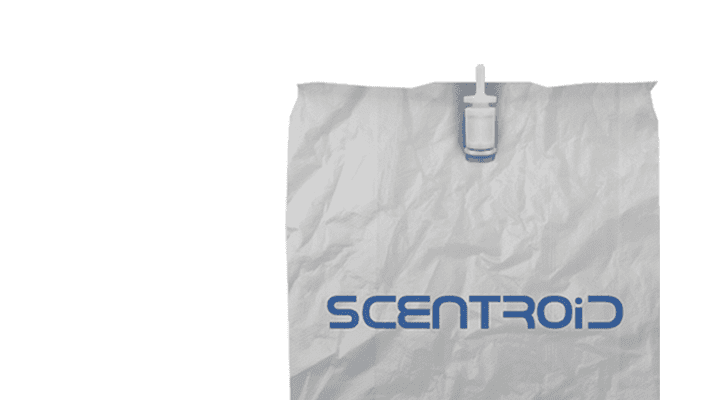
PTFE Sampling Bags
PTFE sampling bags are perfect for sampling air for high accuracy lab result.
Here’s the main reasons for using PTFE bags for your medical research:
- Ultra-pure PTFE film with exceptional sample preservation
- Low sample absorption
- Excellent stability for most compounds
- Stocked in a variety of sizes; custom bags available
How Can Scentroid Help with
Urban Air Pollution Complaints?
Once you activate Scentroid’s devices and enter our software SIMS3, we can use the collected data to determine whether an odour complaint is justified or not. We identify where the great odour sources come from and make justification for you. We also continuously monitoring to help facility maintain better air quality to avoid receiving complaints.
Odour Complaint Justification
Once Scentroid devices are all set and receive all data, SIMS3 will determine whether an odour complaint is justified or not. Red indicates that the complaint was automatically categorized as “justified”, those in green would be recorded, but categorized as “not justified,” those in yellow would be recorded and categorized as “to be justified”. Furthermore, the user can use triangulation to determine the source of unjustified odours.
Triangulation of Unknown Sources
If you are trying to determine the location of potentially unknown sources, SIMS3 offers a triangulation mode and identifier to assist you with pinpointing unknown sources. SIMS3 features the ability to perform triangulation from odour events or from ambient air monitoring equipment readings.

Odour Complaint Analysis
SIMS3 features a correlation module that determines what events caused the greatest odours and what the contributing sources may have been. Furthermore, should your facility’s process events be recorded, SIMS3 will associate those events with odour increases.
Ask us how we can help you with City Air Pollution Research or Urban Air Monitoring!
SIMS3
Sensor Information Management System
SIMS3 sensor information management software, is our all-inclusive software used to view and analyze historical data, run diagnostics, make predictions, and configure various settings for your supported Scentroid device. It offers a complete and integrated suite for ambient air chemical analysis and odor management. SIMS3 can collect data from thousands of devices covering an entire area, using a unique and highly intuitive facility control system.
Powered by
Artificial Intelligence
SIMS3 transforms air quality monitoring and odor complaint management with the power of AI. Our user-friendly interface offers intuitive access to a range of features including pollutant threat assessment, air quality alerts, historical data analysis, sample tracking, plume detection, and complaint management, empowering users of all levels to conduct sophisticated data analytics effortlessly.
Mathematical simulation of how air pollutants disperse in the ambient atmosphere. It is performed with a computer simulation of a pollutant dispersion model
SIMS3 Analytics
View data in several formats including temporal view, statistical view, AQI Analysis view, and heat map.
Event Analytics
Take your analytic capabilities even further by analyzing your recorded events, event types, and overall event activity. In this module, you will be able to determine your most triggered event type and the days with the highest recorded activity.
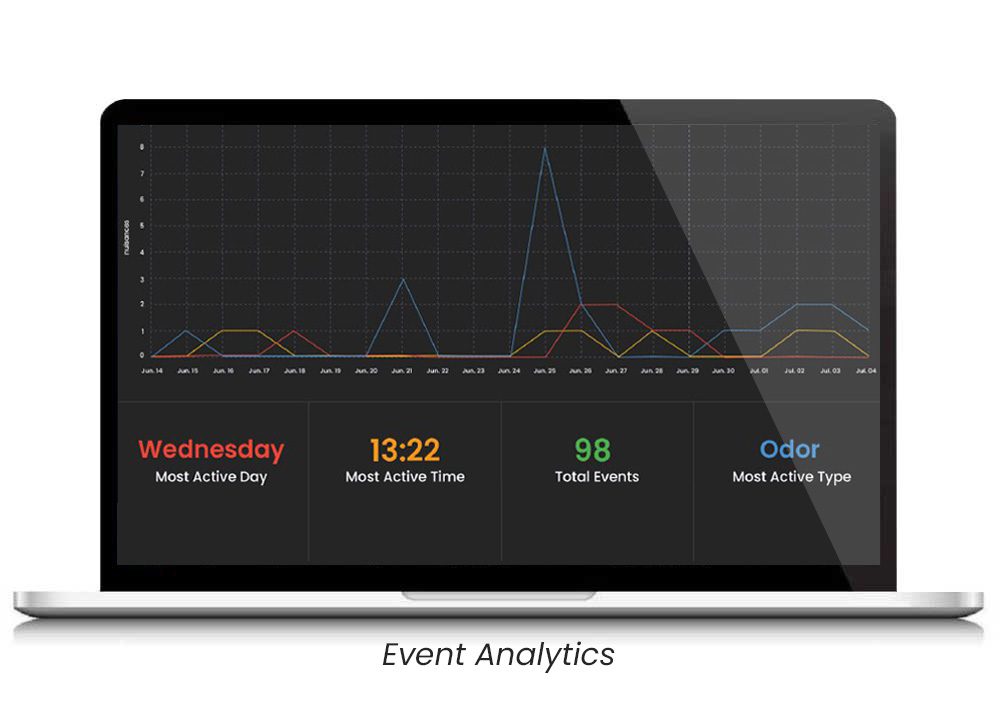
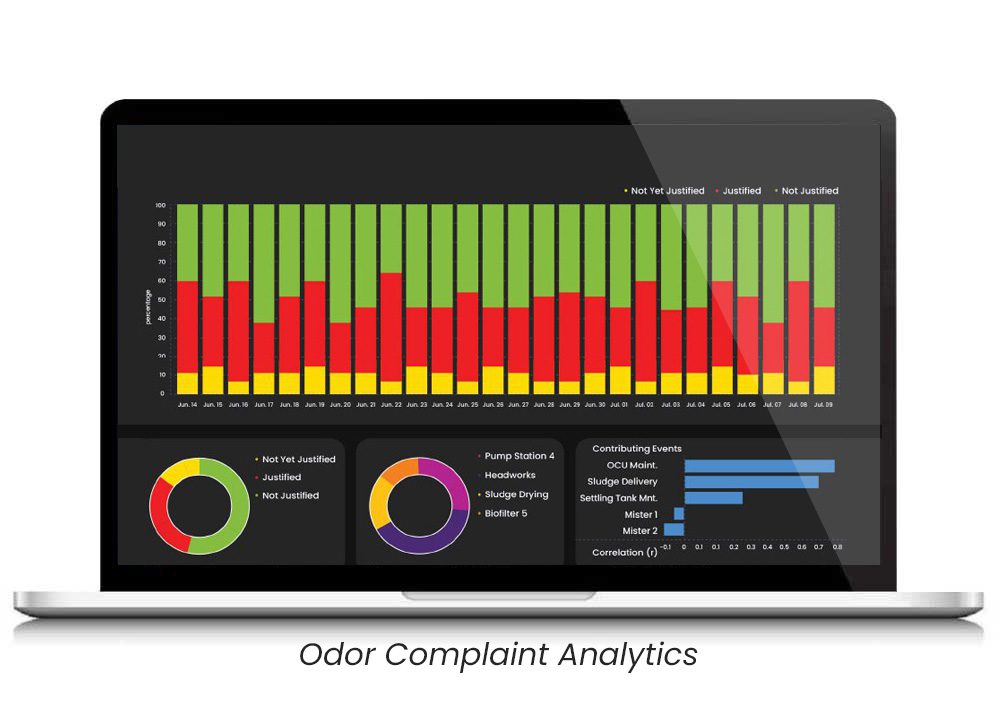
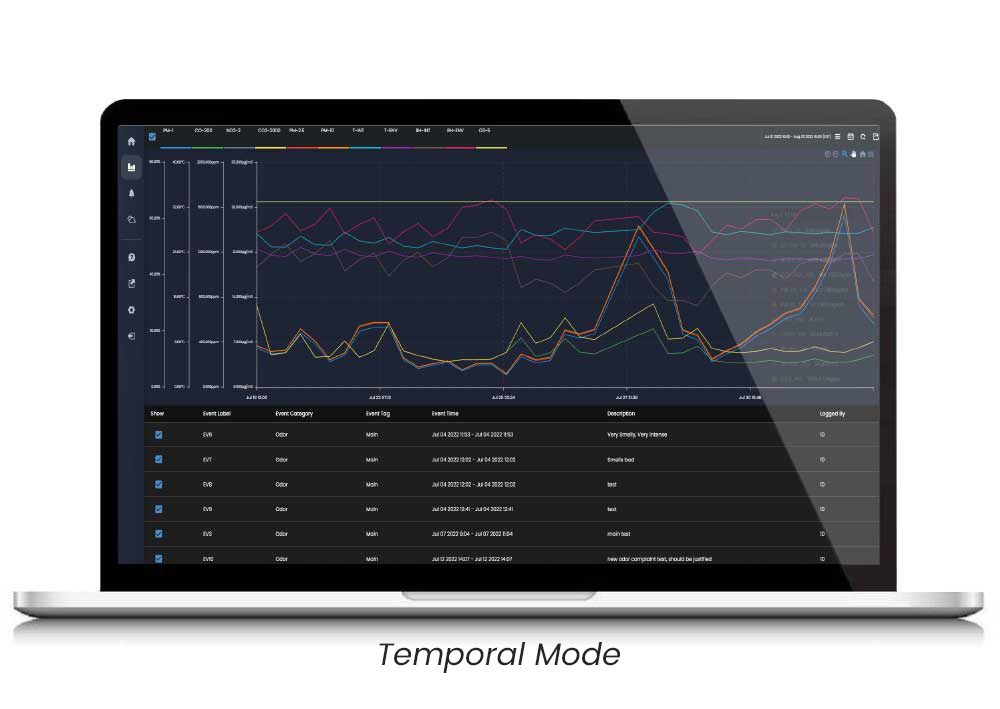
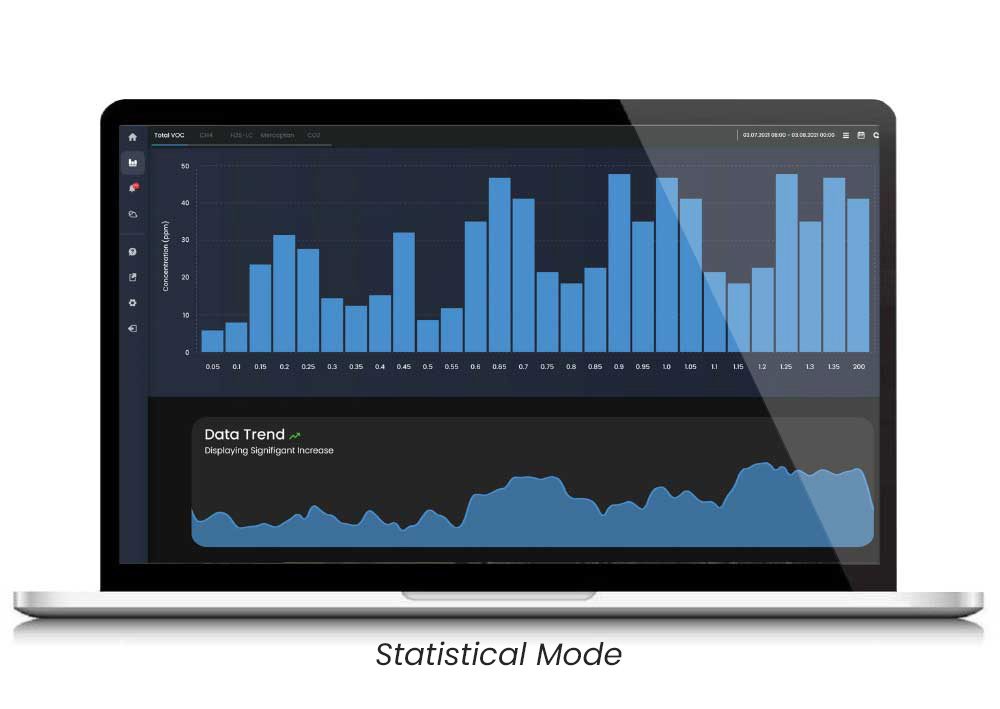
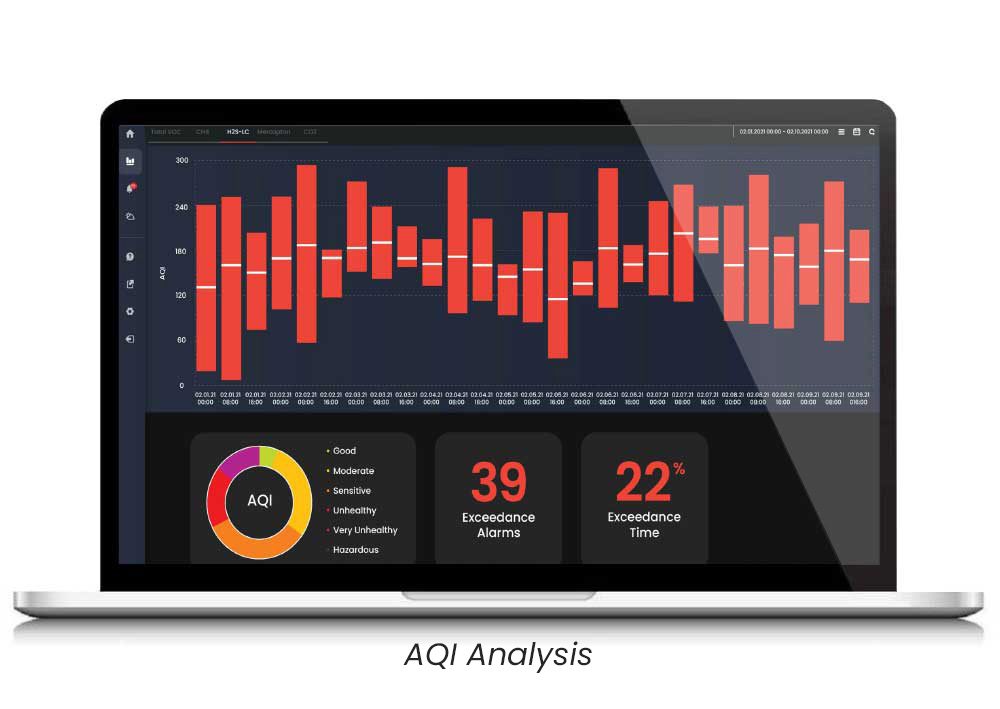
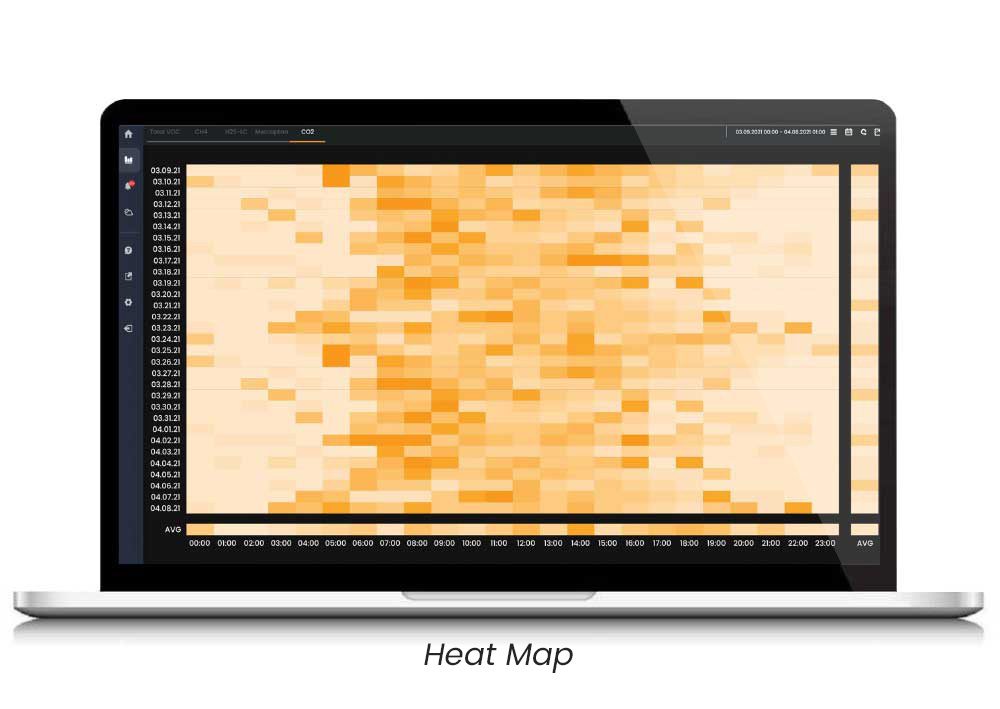
Odor Complaint Analytics
This module allows you to easily determine the justification analytics of all recorded odor events. View which days have had the highest justified or not justified events, view the correlation matrix with contributing events, and see which processes may have a connection to all recorded odor complaints.

Temporal Mode
As shown here in temporal view, the user can Isolate or compare collected sensor data for any user-defined timeframe in an easy to read chart. Any event or event type that occured within the specified timeframe is also tracked.

Statistical Mode
Isolate and determine individual sensor reading trends with our detailed statistical analysis view. Data is presented as percentages vs concentration for quick reference. A data trend guide displays whether your tracked chemical readings are displaying an increase or decrease.

AQI Analysis
Based on established AQI Thresholds (either automatically generated or user-defined), view recorded AQI for any period of time. This module will also allow you to view how many times AQI exceeded these thresholds, and for how long (percentage).

Heat Map
View each individual sensor’s heat map within a user-defined period. Concentration is presented in this format to assist the user with visually defining patterns and trends. Heat map data is presented as date vs. time.
Export Reports
The SIMS3 reporting module provides you with the tools you need to make informed decisions regarding your monitoring projects. At the click of a button, this document generates averages as well as thorough individual sensor reports. Users can schedule weekly, monthly, or annual reports emailed directly to them once generated!
Recommended
Scentroid Services
A comprehensive site overview. Scentroid will formulate a sampling plan and, using a team of qualified engineers and technicians, take analytical and olfactometric measurements and samples at key locations. Scentroid analyzes samples on-site using portable analyzers and olfactometers before being shipped to a comprehensive analytical (ISO 17025) and stationary olfactometric laboratory (EN13725). After analyzing the samples the data goes through post-processing, and is compared against pertinent regulations, guidelines and standards. If exceedance of pollutants is found, Scentroid can recommend suitable approaches in order to fulfill environmental compliance. Optional: atmospheric dispersion modelling can be included in the environmental impact assessment.
Determine the severity and extent of the pollutant / odour emissions from your facility. Simulations are processed using the US-EPA designed and approved, AERMOD modelling suite.
Send us your sample bags and our Olfactometric Laboratory will determine their odour concentration in accordance to EN13725:2022, ASTM E679-04, NVN2820, VDI 3881, GB/T14675-93 and/or AS 4323.3.
Other Scentroid Services
Seek advice from our odour monitor experts and environmental consultants to help you improve the accuracy and reliability of your monitoring projects.
Air quality mapping, model verification, and analysis of potentially dangerous sites have all now been made possible. While in flight, built-in chemical sensors can provide remote monitoring.
Ground level readings are used by SIMS3 to conduct back-trajectory to identify unknown sources. Continuous pollution data and field olfactometric data are used along with meteorological data to triangulate the exact location of an odour source.
Scentroid offers a complete and integrated suite for ambient air chemical analysis and odor management, known as SIMS3. Our software utilizes a unique and highly intuitive facility control system, and powerful artificial intelligence to assist you with daily tasks.
We can assist with continuously monitoring the air quality around the boundary of your site. This is typically used in settings where emissions and pollutants may potentially affect a community.
A team that’s equipped with an SM100i Olfactometer, an OdoTracker personal ambient air monitoring device, a thermal camera, and a noise monitor patrols and collects data.
SIMS3 provides the user with the ability to collect, store, determine the correlation factor, and the justification of all complaints that may have been entered against your construction site/project.
Scentroid is capable of providing you and your construction site with several reports ranging from SIMS3 outputs, to odour testing results based on your site’s requirements. Several report types can be autogenerated using our SIMS3 platform.
Ask us how we can help you with City Air Pollution Research or Urban Air Monitoring!
Monitoring Devices
Scentroid provides a wide variety of monitoring devices to assist you with managing air quality concerns for Urban Centre. From outdoor to indoor monitoring, Scentroid has you covered!
Urban Centre References
Ontario, Canada
Oman
Vancouver, Canada
Dubai
Saudi Arabia
Chicago, USA

